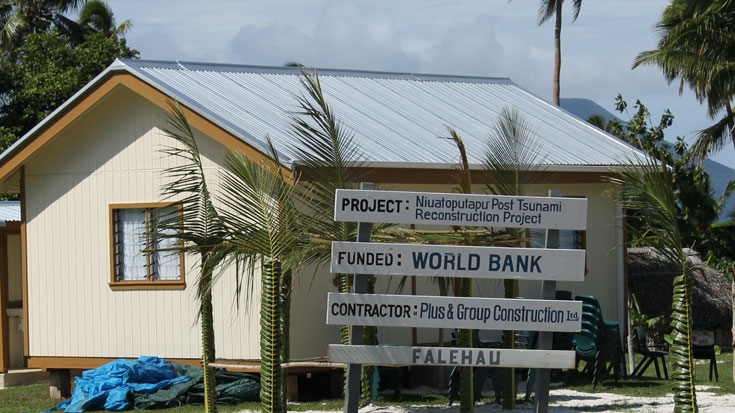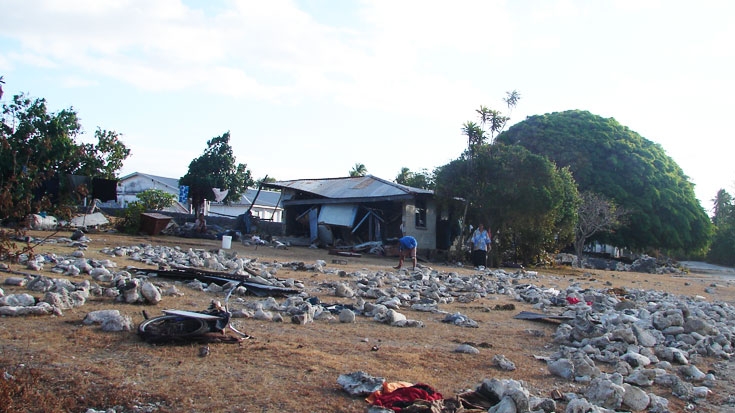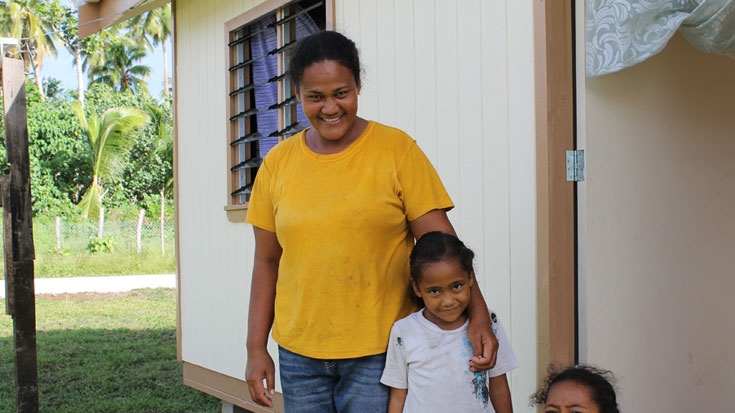Challenge
On September 30 2009, the Niuas island group in the far north of Tonga was struck by an earthquake of 8.3 magnitude, closely followed by three tsunami waves which inundated nearly half of the main island of Niuatoputapu. The impact was devastating: nine people lost their lives; a third of all homes were destroyed, with others severely damaged; and communities lost much critical infrastructure.
Solution
After site visits to the affected islands and consultations with government officials, local residents and other donors, the reconstruction of permanent residential housing was established as a key priority for communities in Niuatoputapu. To build resilience for the future, new houses have been designed to be more resistant to extreme weather and natural disasters, and, with community support, relocated to higher ground where people would be safer from future disaster events.
Results
- Starting in October 2010 through to 2013, the project team provided assistance in coordinating and facilitating the implementation of the Tsunami Recovery Program, including activities financed by the Government of Tonga and other donors. This enabled the reconstruction of all affected buildings in Niuatoputapu, including critical infrastructure such as roads, shops, and community buildings.
- Under the project, 73 new cyclone resistant houses were constructed in a safer part of the island on higher ground, located outside the tsunami inundation zone, with access to good quality water supply and sanitation facilities. Gardens are on fertile soil which has allowed verdant growth, while people continue to use the original land by the coast for livestock. Improved toilet facilities and reliable water supply have allowed improved sanitation and hygiene. The affected houses are now more resilient to the impacts of future disasters through improved construction methods and relocation, where this was necessary for community safety.
The same cyclone-resistant building design saved many homes from the havoc of category 5 cyclone Ian, the strongest cyclone ever to hit Tonga, which in January 2014 destroyed the majority of homes on the Ha’apai island group.
- A further 38 homes and 7 community halls that were damaged but not fully destroyed have been repaired and 9 new buildings built to replace four destroyed shops, two bakeries and three communal weaving houses have been constructed.
- About 13 km of village access roads as well as the island’s main collector road, damaged by the tsunami, have been resealed, better connecting communities to hospitals, schools and community buildings. The road works also created jobs, income and training for about 100 local residents – including some 20 women.
- Tonga’s capacity to produce and use risk information to support disaster reduction, preparedness and recovery has been significantly improved due to equipment, information, and training delivered by the project as demonstrated by the high quality building damage maps to guide reconstruction planning following Tropical Cyclone Ian which hit the Ha’apai island group in Tonga in January 2014. A policy framework for the integration of risk information in land use planning has been developed and its use was piloted on Niuatoputapu.
- Signage identifying tsunami evacuation areas, escape routes and safe areas has been installed on the island and community disaster response arrangements have been developed and tested through drills.



